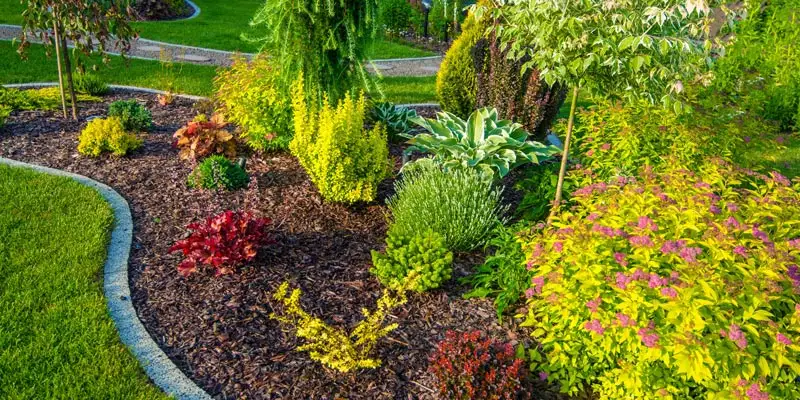Landscape Design Can Be Fun For Anyone
Landscape Design Can Be Fun For Anyone
Blog Article
The Ultimate Guide To Landscape Design
Table of ContentsAll about Landscape DesignThe Buzz on Landscape DesignThe 8-Minute Rule for Landscape DesignLandscape Design Can Be Fun For Anyone
When designing a domestic landscape, the most essential action is to put a strategy on paper. Establishing a plan of attack will conserve you time and money and is more probable to lead to an effective style. A master plan is established via the 'layout procedure': a detailed approach that takes into consideration the environmental problems, your wishes, and the aspects and concepts of style.The 5 actions of the design process include: 1) carrying out a site supply and evaluation, 2) identifying your needs, 3) developing practical diagrams, 4) developing theoretical style plans, and 5) drawing a last design plan. The very first 3 actions establish the visual, useful, and gardening demands for the layout. The last 2 steps after that use those needs to the development of the final landscape plan.
This is a crucial step for both plant selection and positioning and situating family activities and functions. It is necessary due to the fact that the exact same climate problems that impact the plantstemperature, humidity, rainfall, wind, and sunlightalso impact you, the user. The following step is to make a list of your demands and desiresthis assists you identify how your backyard and landscape will be made use of.
The practical diagram is after that used to situate the activity rooms on the site and from this layout a theoretical strategy is established. The last step is a last layout that includes all the hardscape and growing details that are necessary for installation. Throughout the style procedure there are 10 essential points to take into consideration: for plant choice and task place by considering what you want and require to help establish shapes and arrange spaces by assigning task areas and connecting with elements for both the atmosphere and the customer by utilizing massing and layering strategies such as transition areas and prime focus in the materials, the colors, and the surface area textures for the growth and upkeep of plants by utilizing sustainable style practices A detailed inventory and analysis of the website is essential to identify the ecological problems for plant development and the most effective use the website.
Getting The Landscape Design To Work
The sort of soil figures out the nutrients and wetness readily available to the plants. It is constantly best to make use of plants that will certainly thrive in the existing soil. Although soil can be amended, amendment is frequently expensive and a lot of times inefficient. Existing vegetation can provide ideas to the dirt type. Where plants grow well, keep in mind the dirt problems and use plants with similar expanding needs.

Sun/shade patterns, the quantity and length of exposure to sunlight or color (Figure 1), create microclimates (occasionally called microhabitats) - Landscape Design. Recording website problems and existing greenery on a base map will disclose the place of microclimates in the lawn. Plants typically fall right into a couple of of four microclimate categories-full sunlight, partial color, shade, and deep color
Indicators on Landscape Design You Should Know
Figure 1. Sunlight and color patterns. Credit Scores: visite site Gail Hansen, UF/IFAS It is important to keep in mind all the status quo on an accurate base map when doing the website inventory (Number 2). Energies such as power lines, sewage-disposal tanks, below ground utilities and roofing system overhangs identify plant place. Make use of a property surveyor's plat of your property for the boundaries and location of your home.


Identify the time and money you are prepared to place into maintaining the plants and hardscape-be practical concerning your intents and capacity. Proposed usage locations. Debt: Gail Hansen, UF/IFAS There are numerous various landscape layout themes- from easy to complicated, however it is valuable to choose one to lead your plant and material selection.
Numerous individuals discover it useful to search in horticulture magazines and books for concepts. This is an excellent start, yet understand that the gardens in the pictures were chosen because they Check This Out are outstanding examples. Check out the images with an important eye to collect ideas that official website you can adjust to your interest level, your budget plan and your site.
Choose if you intend to open your yard, shut your yard, or a little of both, to these sights (Landscape Design). Simply put, do you desire the garden to confine the room around you and associate primarily to your house, or do you want the garden to open sights and look exterior, associating with the surroundings? This will provide you a starting indicate assume concerning a motif
Landscape Design - An Overview
Every garden must have a form style, but not all gardens have a design theme. Lots of residential gardens have no particular design other than to mix with the home by duplicating information from the architecture such as materials, color, and form.
In a kind theme the company and shape of the rooms in the yard is based either on the shape of the home, the form of the locations in between the residence and the building limits, or a favored shape of the house owner. The form motif figures out the shape and company (the format) of the areas and the web links in between them.

Report this page